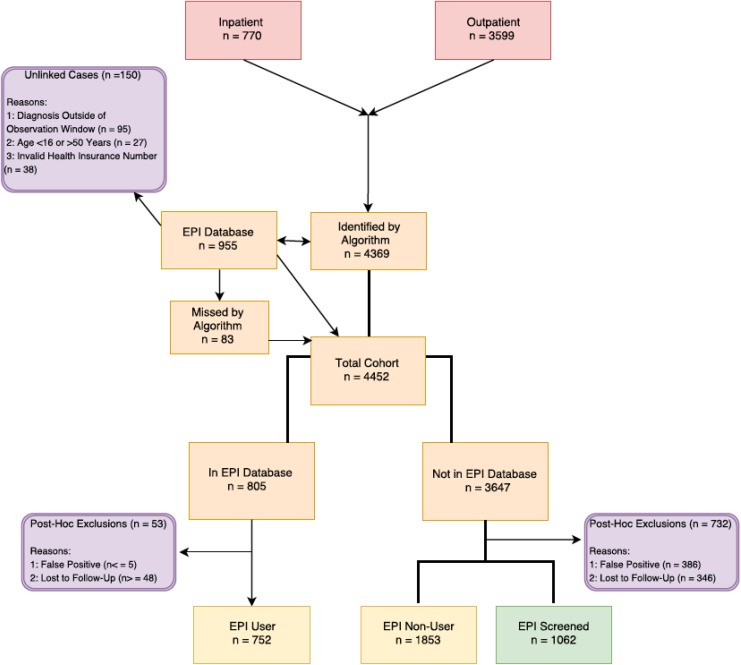Figure 1.
Flowchart showing the creation of the study cohort of incident cases of nonaffective psychotic disorder in the catchment area of the Prevention and Early Intervention for Psychosis Program (PEPP) between 1997 and 2013. Cases were identified by a validated algorithm in the health administrative data, and this cohort was linked to primary data from the PEPP to identify users of early psychosis intervention (EPI) services. We excluded people who had never had the diagnosis of a psychotic disorder confirmed by a psychiatrist and had no subsequent contacts for psychosis after entering the study cohort (false positives). We also excluded people who had fewer than 2 contacts with any type of health services in the catchment area after the diagnosis (lost to follow-up). We additionally removed people who had contact with a PEPP psychiatrist but were not admitted to the program (EPI screened), for a final comparison of EPI users and nonusers.

